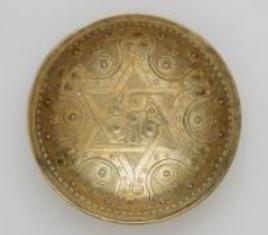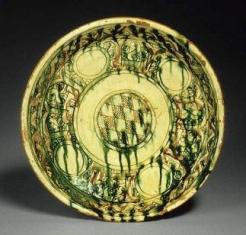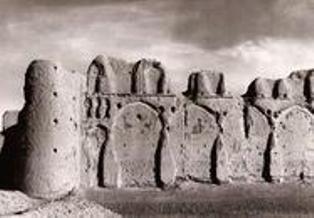The Ghaznavids (r. 366 - 582 AH / 977 - 1186 CE) were men of Turkish slave origin who formed a dynasty in Afghanistan, Khurasan and northern India (r. 367-545 AH / 977-1150 CE), and reigned in Punjab until 582 AH / 1186 CE.
The origins of the Ghaznavids were in the middle-decades of the 4th AH / 10th CE century, when the Turkish slave commanders of the Samanids made themselves, in effect, autonomous in the cities of Bost and Ghazna, on the southern fringes of the Samanid territories. The Samanid commanders Alptegin (d. 364 AH / 975 CE) and his successor Sebuktegin (d. 387 AH / 997 CE), following their conquest of the town of Ghazna in 351 AH / 962 CE, ruled an independent Samanid governorate there and conquered territories in Khurasan.
Sebuktegin’s son, Mahmud of Ghazna (r. 388-420 AH / 998-1030 CE), ended Samanid rule in Khurasan in 389 AH / 999 CE; fought against the Shi‘a Buyids and went on to conquer Baluchistan (south-eastern Iran) and Khwarezm (an oasis on the delta of Amu Darya River in western central Asia. From the Persian lands, Mahmud’s conquests stretched as far as Gujarat and Sind in the Indian subcontinent. By the time of his death, Mahmud had constituted a powerful and extensive empire in these regions.
An extended period of peace made possible the beginning of a variety of cultural endeavours, mainly in Ghazna and Herat. Mahmud patronised the arts and literature, which attracted outstanding scholars and literary figures to Ghazna. Among them were Abu Rayhan al-Biruni, a prominent philosopher, mathematician and a scholar of Sanskrit and Ferdawsi, a Persian poet and the author of the great Persian epic poem the Shahnama. Mahmud’s conquests in India furthered trade and the exchange of ideas between the Indian subcontinent and Persia and many Muslim scholars, historians and poets moved to India and settled there. Masud Sa‘d-i Salman, a prominent scholar of astrology, literature and Arabic, was sent to India as ambassador by the Ghaznavids.
Mahmud’s son Masud I (r. 420-430 AH / 1030-1040 CE) continued to reign in India but was defeated by the Seljuks at Dandanqan in 430 AH / 1040 CE. The Seljuks expelled the Ghaznavids from Khurasan which drove them further eastward. Eventually, Ibrahim I of Ghazna (r. 451-492 AH / 1059-1099 CE) had to surrender all his territories in the Oxus region to the Seljuks and his rule became limited to eastern Afghanistan and northern India. Bahram-Shah of Ghazna (r. 511-546 AH / 1118-1152 CE) enforced his rule in Punjab under the authority of the Seljuks. In 556 AH / 1161 CE, the Ghaznavids were driven back further by the Ghurids, who captured Ghazna. Nearly twenty-five years later, in 581 AH / 1186 CE, the Ghurids captured Lahore and removed the Ghaznavids from power.
Citation
“Ghaznavids.” Encyclopedia Iranica Online. 2012.
http://www.iranicaonline.org/articles/ghaznavids [accessed June 2013]
Hattstein, Markus and Delius, Peter. Islam: Art and Architecture, (Cologne: Könemann, 2000).
Bosworth, Clifford Edmund, The Ghaznavids, (Edinburgh: University Press, 1963).
Nazim, M., The Life and Times of Sultan Mahmud of Ghazna, (Cambridge: University Press, 1931).
Ghaznavid Monuments
http://www.archnet.org/timelines/48/period/Ghaznavid/year/977 [accessed February 2014]
Ghaznavid Art in the Islamic Medieval Period
http://www.metmuseum.org/toah/hi/hi_ghaznavid.htm [accessed July 2013]
Ghaznavids and the Ghurids
http://www.davidmus.dk/en/collections/islamic/dynasties/ghaznavids-and-ghurids [accessed July 2013]



